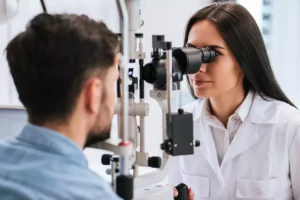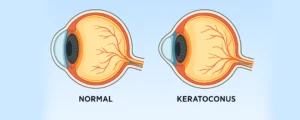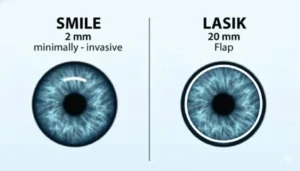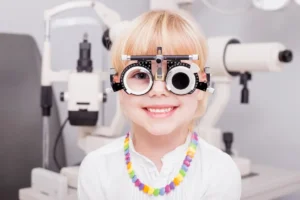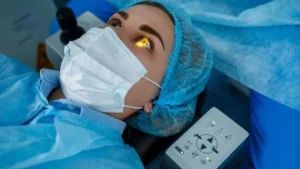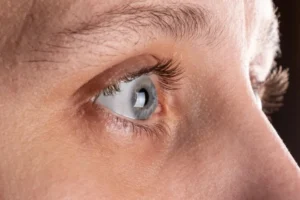Vision Correction with Intraocular Lenses
Intraocular lenses (IOL) are artificial lenses that are placed in the place of a clouded one during cataract removal.Cataracts are one of the main causes of vision impairment and blindness. In different countries, this diagnosis occurs with a frequency of up to 30%, mostly elderly people who are ill. To date, there is only one effective way to restore vision in cataracts — surgical. The clouded lens is removed, replaced with an artificial one – an intraocular lens (IOL). And, although the method of cataract treatment is the same in all cases, the patient has the right to choose the type of IOL after consulting with a doctor beforehand.
What are intraocular lenses and why are they needed
The human eye is a perfect optical system, far superior in capabilities to the most sensitive modern cameras. Each element in it is in its place and performs a special function. One of the most important details of this complex system is the lens. Externally, it is a biconvex lens, the function of which is to refract the light beam coming through the pupil and focus it on the retina.With a disease such as a cataract, the lens becomes cloudy and eventually loses its function. As a result, visual acuity decreases, a person ceases to see objects clearly, color perception worsens. In the later stages of the disease, complete blindness sometimes develops.Unfortunately, it is impossible to restore the affected lens. Drops and other conservative remedies only slightly slow down the progression of cataracts in the initial stages. Medicine knows only one radical method of treatment that helps to restore normal vision to the patient — a surgical operation to install an artificial lens of the eye.Another name for such products is intraocular lenses. They are made of a material that is biologically compatible with the tissues of the eye (acrylic, silicone), and therefore the risk of rejection, allergic and inflammatory reactions is minimized.Structurally, the IOL is a lens with a diameter of about 5 mm with shackles for fixing. If all these parts are made of the same material and are made as a whole, such a product is called a monoblock. Modern IOLs are soft, which allows minimizing the degree of tissue injury during surgery. The twisted lens with a special tool – an injector – is implanted through a micro-incision, after which it straightens itself, taking the desired position. Models of previous generations were made of rigid materials. To install them, a large incision was required, after such an operation, stitches had to be applied. Now such problems are a thing of the past.Different types of IOLs are used in ophthalmology. All these products can be divided into two large groups — phakic and aphakic. The former serves to correct myopia, hyperopia, and astigmatism and, thus, are used as an alternative to glasses and contact lenses. When they are installed, the lens is not removed. In the surgical treatment of cataracts, only aphakic IOLs are used. So we will talk exclusively about this type of intraocular lenses. But even within this group, there is its classification.Types of IOLs, their differences, and advantages
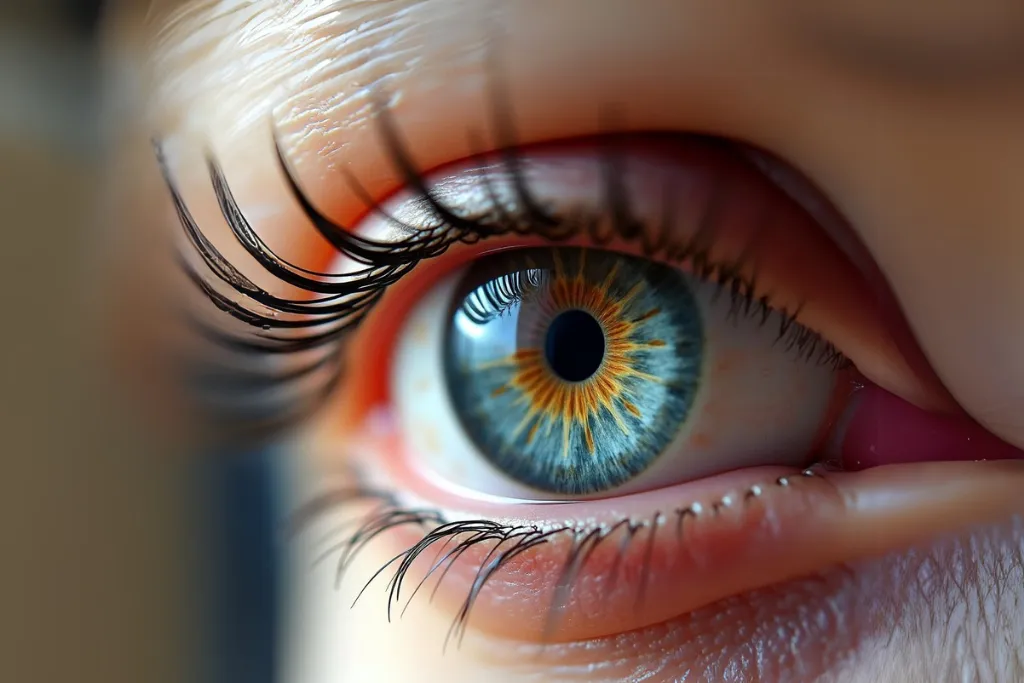 The first IOL implantation operation was performed in the middle of the XX century. This was a real breakthrough in ophthalmic surgery, however, the material of the artificial lens itself, the design of the product, and the technique of surgical intervention were far from perfect. The products took root well, but patients often had inflammatory and other complications, and the fixation of the implant was not reliable enough. In addition, the first IOLs could not correct refractive errors (nearsightedness, farsightedness, and age-related presbyopia, astigmatism).The most common classification of intraocular lenses is based on the sign of focality. To understand what this means, you need to remember the properties of the lens. This natural “lens” has elasticity and the ability to change shape according to the focal length. It becomes more or less convex depending on whether we are looking into the distance or observing a nearby object. In other words, the lens can adjust to the desired distance, so a healthy eye sees equally well both near and far (this ability is called accommodation). An artificial intraocular lens made of synthetic material, of course, does not have such properties. Its ability to focus at different distances (pseudo-accommodation) depends on the number of optical zones. From this point of view, monofocal and polyphocal IOLs are distinguished, as well as modern EDOF lenses, which in this respect are practically not inferior to a real lens.
The first IOL implantation operation was performed in the middle of the XX century. This was a real breakthrough in ophthalmic surgery, however, the material of the artificial lens itself, the design of the product, and the technique of surgical intervention were far from perfect. The products took root well, but patients often had inflammatory and other complications, and the fixation of the implant was not reliable enough. In addition, the first IOLs could not correct refractive errors (nearsightedness, farsightedness, and age-related presbyopia, astigmatism).The most common classification of intraocular lenses is based on the sign of focality. To understand what this means, you need to remember the properties of the lens. This natural “lens” has elasticity and the ability to change shape according to the focal length. It becomes more or less convex depending on whether we are looking into the distance or observing a nearby object. In other words, the lens can adjust to the desired distance, so a healthy eye sees equally well both near and far (this ability is called accommodation). An artificial intraocular lens made of synthetic material, of course, does not have such properties. Its ability to focus at different distances (pseudo-accommodation) depends on the number of optical zones. From this point of view, monofocal and polyphocal IOLs are distinguished, as well as modern EDOF lenses, which in this respect are practically not inferior to a real lens.Monofocal IOLs
A monofocal, or single-focus, the lens has only one focus zone, most often the far one. With its help, a person can clearly distinguish objects in the distance, but cannot see up close. To read, use a smartphone, sew or knit, you have to use “positive” glasses (which are worn with farsightedness).A less common option is lenses with a near focus. They are suitable for activities that require clear vision at a short distance but do not work well at long distances. After installing such lenses, a person can easily type SMS or read the fine print on the product packaging, but for walking or driving a car, “minus” glasses will be required.This limited functionality is the main drawback of mono-focal lenses. As for the advantages, it can be noted, perhaps, only a lower cost compared to more advanced models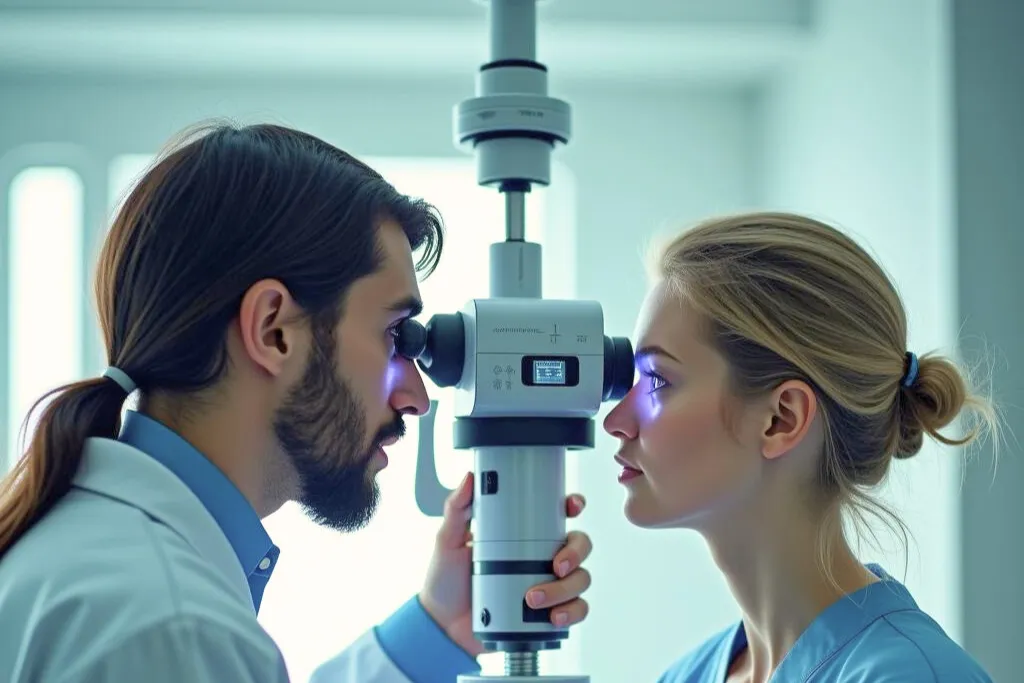 Polyphocal IOLsThis is the next generation of intraocular lenses. They have not one, but several optical zones, each of which is responsible for focusing at a certain distance. Such lenses allow you to see both near and far, and at medium distances. The more focus zones (and there can be two, three, or more, respectively, IOLs are called bifocal, trifocal, multifocal), the wider the range of visual perception. At the same time, you do not need to additionally use glasses.To correct the shortcomings of previous IOL models and create an artificial lens that is as close as possible to natural properties, the developers, after years of searching, came to the EDOF technology. To date, this is the newest trend in ophthalmology, actively gaining strength.EDOF lensesThe abbreviation EDOF stands for and translates as “extended depth of focus”. The essence of the technology is that a wide range of the surveyed space is projected into a single focus area (as opposed to several separate zones in polyphocal IOLs). Thus, the EDOF lens works almost the same way as a real lens. It allows you to see equally well both near and far, and at any average distances. At the same time, high contrast, good color rendering quality are provided, and when switching from one focus point to another, there are no “dips”.The expansion of the depth of the focus zone is achieved in various ways: each manufacturer has its technology. So there are also differences in the category of EDOF lenses, and you always need to consider the characteristics of a particular model.
Polyphocal IOLsThis is the next generation of intraocular lenses. They have not one, but several optical zones, each of which is responsible for focusing at a certain distance. Such lenses allow you to see both near and far, and at medium distances. The more focus zones (and there can be two, three, or more, respectively, IOLs are called bifocal, trifocal, multifocal), the wider the range of visual perception. At the same time, you do not need to additionally use glasses.To correct the shortcomings of previous IOL models and create an artificial lens that is as close as possible to natural properties, the developers, after years of searching, came to the EDOF technology. To date, this is the newest trend in ophthalmology, actively gaining strength.EDOF lensesThe abbreviation EDOF stands for and translates as “extended depth of focus”. The essence of the technology is that a wide range of the surveyed space is projected into a single focus area (as opposed to several separate zones in polyphocal IOLs). Thus, the EDOF lens works almost the same way as a real lens. It allows you to see equally well both near and far, and at any average distances. At the same time, high contrast, good color rendering quality are provided, and when switching from one focus point to another, there are no “dips”.The expansion of the depth of the focus zone is achieved in various ways: each manufacturer has its technology. So there are also differences in the category of EDOF lenses, and you always need to consider the characteristics of a particular model.Eye Treatments Latest Blog Posts
You can review other topics you wonder about Eye Treatments treatment in our most up-to-date posts:

